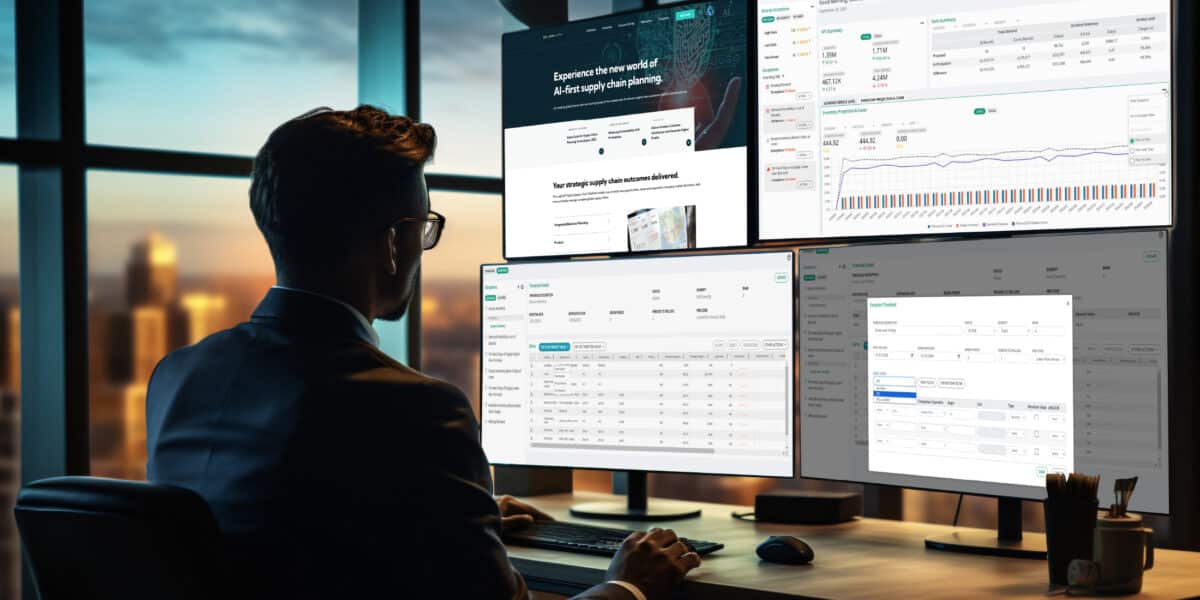
 Predictable financials are as much, if not more, important today as they were 35 years ago. Today’s sales and operations planning (S&OP) process encompasses people, process, and technology to create a business plan that will deliver the predictable financials executives seek.
Predictable financials are as much, if not more, important today as they were 35 years ago. Today’s sales and operations planning (S&OP) process encompasses people, process, and technology to create a business plan that will deliver the predictable financials executives seek.
It is more than delivering an accurate view of the future, S&OP is about creating a repeatable process that can withstand the onslaught of supply chain disruptions, become the heartbeat of the organization, and bring product, demand, supply and finance together around a single plan that aligns with the corporate goals.
Ultimately, the S&OP plan provides management a view at any point in time of how the company’s operations are performing vis-à-vis the financial plan. In this way it provides management guidance in the context of the end-to-end supply chain and prevents silo’d optimization that can de-optimize the overall corporate plan.
A mature S&OP process aligns the supply chain with corporate strategy to become the glue that binds performance end-to-end across the supply chain. Once a repeatable process is in place and producing a well-balanced plan, the company can focus on seeking new opportunities and removing barriers.
More than Balancing Supply and Demand
Many years ago, APICS professionals defined S&OP in an attempt to create a standard, process-based solution to business planning within the supply chain. The goal was to develop a framework that would outline interactions as the business plan was executed throughout the organization.
We’ve been working for years to break the walls between functions in the supply chain. For example, we often hear S&OP referred to as a balancing act between supply and demand. At its most basic form, this is correct. How do we get the supply side and the demand side of our business to agree on one plan, one set of numbers and one set of actions? In the old days we just wanted “sales” and “operations” to talk to each other and stop competing. Now we want much more; we want them to collaborate!
The same thing is happening today except there are many more dimensions to the balance than just supply and demand. What’s challenging about the modern S&OP process is how to balance, negotiate and manage across the multiple dimensions of the supply chain.
Today the “demand” side of the equation is no longer a homogenous single sales organization or channel. It is a multi-channel, multi-layered amalgam of demand signals that has to be synthesized into operations. The supply side is now a multilayered, global supply chain with third party suppliers, manufacturers and providers. Each of these layers not only provides products, but they also consume and contribute a complex matrix of products, expertise, services, and information that needs to be synthesized into the organization.
The supply chain today extends out beyond the corporate walls into collaboration with different partners, suppliers, and customers. This is more than simply passing data back and forth, this is truly collaborating to control, move, and orchestrate the extended supply chain ecosystem.
Modern supply chains balance these complexities of supply and demand across multiple horizons at multiple levels of aggregation. They manage tradeoffs internally between procurement, manufacturing, brand management, engineering, finance, and IT.
The modern supply chain is full of constant change, constant disruption, and constant product innovation. This means that even if you determine the tradeoffs today, it will all change tomorrow–the pace of change has quickened considerably. What used to be a monthly cycle is now turning weekly, daily and in some cases instantly as transactions are harvested to provide guidance to the operational plan.
This is not your father’s S&OP. This multidimensional swarm of supply and demand is a slippery fish to grab hold of. Uncertainty and disruption make it difficult to create an efficient and resilient S&OP process. Supply chain leaders easily fall into the trap of criticizing past performance instead of focusing on resolving ongoing issues. How do we get all the players out of reactionary mode and work together to agree on a business plan?
One of the best tools to support your S&OP process is a digital supply chain platform. A platform can help you overcome some of the most common S&OP pitfalls: balance mid-term and long-term plans, create scenarios that align demand and supply with financial plans, and reach consensus and close gaps between reality and targets.
Contact us to learn more about how you can improve the S&OP process for your business.


